There’s nothing quite like the taste of fresh, homegrown tomatoes. And believe it or not, growing tomatoes is actually pretty easy.
If you’re looking to add delicious tomatoes to your garden this year, keep reading for tips on how to get started.
Determinate Tomatoes vs. Indeterminate Tomatoes
Tomatoes are often categorised by their growth habit: determinate versus indeterminate.
Determinate varieties will grow steadily until they reach their desired length and yield fruit once.
Indeterminate tomatoes grow tall vines and will produce fruit much slower.
Determinate tomato varieties
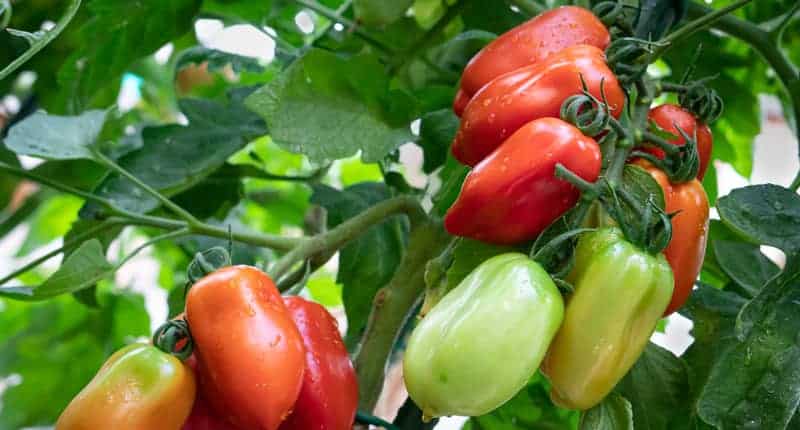
Determinate tomatoes are varieties that grow to a fixed mature size and ripen all their fruit in one short period (usually about two weeks).
Once this first flush of juicy goodness has been set, the plant will diminish both in vigour and production for future blooms.
Here is a list of determinate tomatoes:
- Glacier
- Mini Roma
- San Marzano
Indeterminate tomato varieties
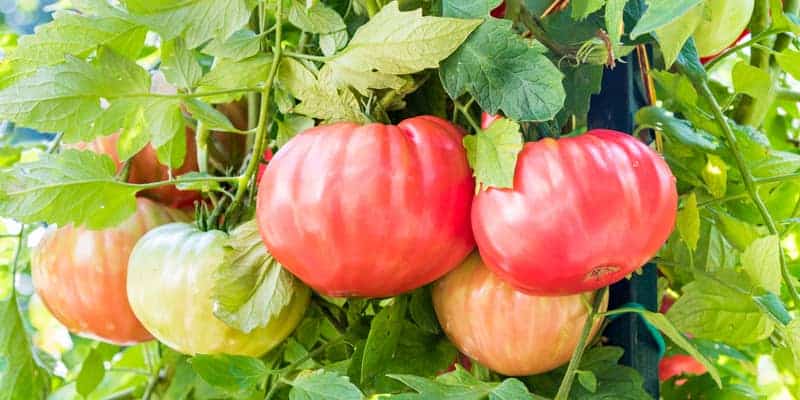
Indeterminate tomatoes are vining plants that continue to extend in length throughout the growing season.
They will give you a slow and steady supply of fruit, rather than one large harvest like determinate tomatoes do.
However, this means they ripen later on during each year’s planting period.
Here are some popular indeterminate tomato varieties:
- Beefsteak
- Big Boy
- Early Girl
How to grow tomatoes from seed
Growing tomatoes from seed is a fun and rewarding process anyone can do with patience and care.
While it may take longer than simply buying plants from a nursery, starting from seed allows you to choose from a wider variety and get a jump start on the growing season.
Plus, there’s nothing quite like the sense of accomplishment from watching your plants grow from tiny seeds into healthy, productive plants.
How to grow cherry tomatoes
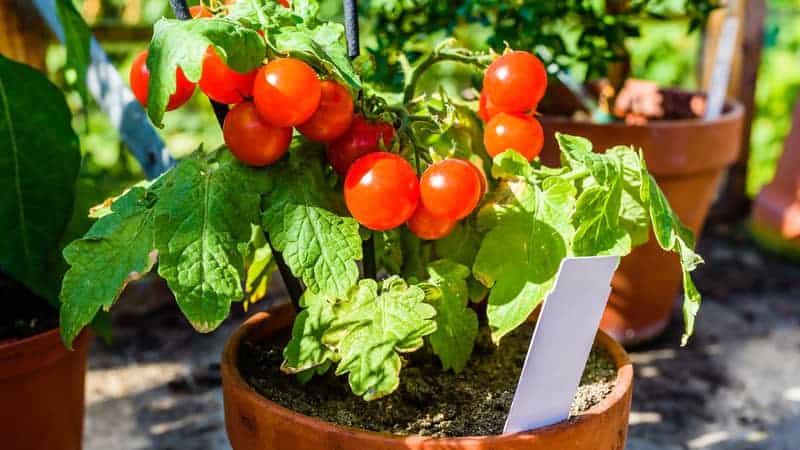
Growing cherry tomatoes is a great way to add some sweetness and colour to your homegrown tomatoes.
Here are a few tips to help you get started:
- Choose a sunny spot in your garden or patio for your plants. Cherry tomatoes need at least six hours of sunlight each day, so make sure they will have access to plenty of light.
- Next, prepare the soil by adding some compost or well-rotted manure. This will help the plants to thrive and produce lots of delicious fruit.
- Then, sow the seeds in your nursery in late winter or early spring. Sow them about half an inch deep in seed-starting mix and keep them moist until they germinate.
- Once they have germinated, thin out the seedlings so that only the strongest ones remain.
- Finally, transplant the seedlings into your garden or patio pots when they are about eight weeks old. Be sure to water them well and give them support if necessary.
How to grow glacier tomatoes
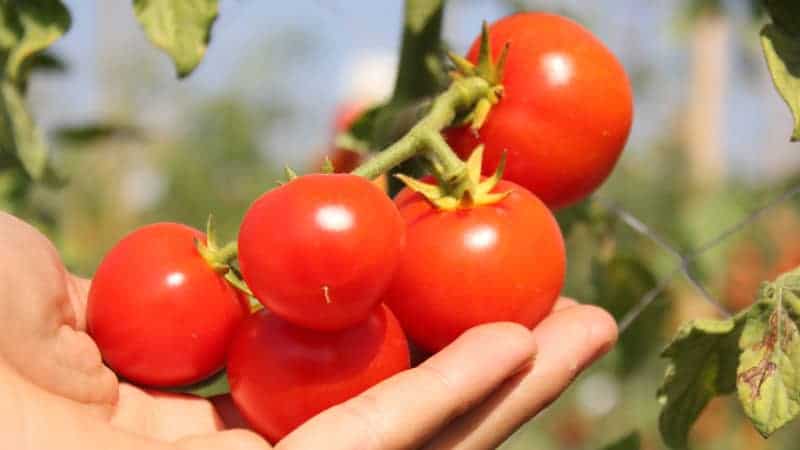
The glacier tomato is a type of cherry tomato that is known for its sweet flavour and high sugar content.
While they are typically grown in greenhouses, they can also be successfully grown outdoors in cooler climates.
If you live in an area with a short growing season, you can start your plants indoors about six weeks before the last frost date.
Here are a few steps to growing your own glacier tomato plant:
- Choose a sunny spot in your garden for your tomato plants. Glacier tomatoes need at least six hours of sunlight per day in order to produce fruit.
- Plant your tomatoes in well-drained soil. Tomatoes will not do well in soggy soil, so make sure that the area you choose has good drainage.
- Water your plants regularly. Keeping the soil moist will help your plants produce more fruit. However, be sure not to overdo it — too much water can actually damage the roots of your plants.
- Apply a layer of mulch around your plants. This will help to keep the soil moist and prevent weed growth.
- Fertilise regularly. Use a high-quality tomato fertiliser every two weeks during the growing season.
- Protect against pests and diseases. Keep an eye out for common tomato diseases like blossom end rot and early blight. Treat problems promptly with the appropriate insecticide or fungicide.
When to grow tomatoes
In tropical areas, tomatoes can be grown all year round. In the temperate parts of Australia, it’s best to grow tomatoes from late spring through early summer, harvesting from late summer through to early winter.
If you live in an area with a long growing season, you may be able to plant tomatoes as early as September.
Where to grow tomatoes
Tomato plants need at least six hours of sunlight per day, so be sure to choose a sunny spot in your garden.
You should also ensure that the soil is well-drained and rich in organic matter.
With a bit of planning and some patience, you can enjoy fresh tomatoes from your garden for months to come.
How to grow tomatoes outside
Few fruits are as versatile as tomatoes, and growing them from seed is a great way to get the most out of your garden.
Tomatoes are a brilliant choice for novice gardeners as they’re relatively easy to grow and can yield a bounty of fruit.
Plot and soil mix
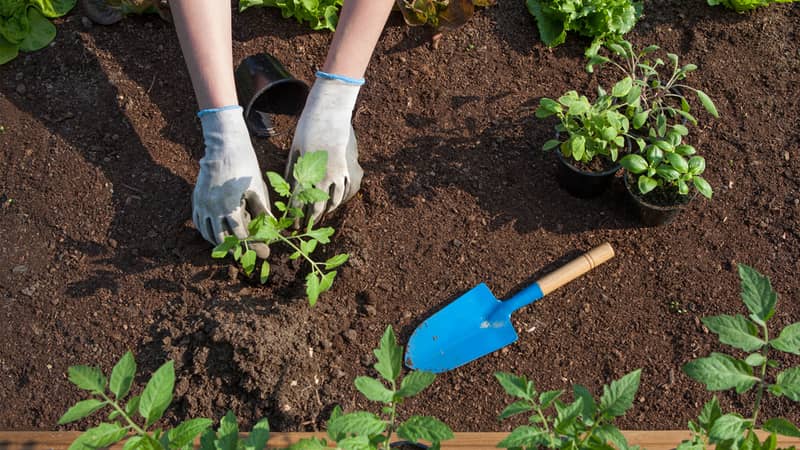
Choose the right spot in your garden. A plot with adequate sunlight is perfect for your tomato plant. Amend the soil with compost or aged manure.
Plant the tomato seedlings deep enough so that the top of the root ball is just below ground level.
To encourage tall-growing vines, insert garden stakes or a trellis as they grow.
Tie your tomato vines loosely to the support with soft gardening strings and wrap heavier branches where necessary for stability.
You won’t have to stake bushes unless they are planted near windows that can be opened.
Light
Tomatoes grow best in bright, sunny spaces. They need 6 to 8 hours of sunlight to thrive. But if it’s too hot, you will need to water them more often.
You may also need artificial lights or heat lamps if you want to plant them in colder seasons.
Water and feeding
Water once or twice a day. One way to tell if your tomatoes need watering is to check the soil around the plants.
Use a stick or your finger to poke a few inches down. If it’s dry, your plant is thirsty.
Water at the base of the plant or use a soaker hose to deliver water slowly and evenly to the roots of the plants.
To maintain the health and vigour of your tomatoes, they will need a lot of nutrients.
You can do this by fertilising at planting time (when you add more soil), then again when fruit sets in about two weeks later.
Maintenance
Prune off any suckers (side shoots) that grow between the main stem and branches.
If your plant produces many beautiful flowers but no fruit, there may be an issue with the lighting or water.
Your tomatoes might not be getting enough light or are being watered too frequently.
Avoid watering overhead or during the afternoon. Instead, spray water near the soil early in the morning or late afternoon.
Harvest tomatoes when they are ripe — you’ll know they’re ready when they start to turn red or orange.
How to grow tomatoes indoors

Some varieties are better suited to containers than others, and your available space can also play a role in which type of pot will work out most efficiently.
If you’re tight on space and plan to eat your tomatoes fresh, consider growing an indeterminate tomato.
Cherry tomatoes like the Gardener’s Delight are perfect for growing indoors.
Pot and soil
Even small tomato varieties need a large pot that is at least 30cm deep, or they won’t have enough room for their strong root system.
Another special consideration is that indeterminate tomatoes need stakes or a chicken wire frame to climb on.
Young tomato plants should do fine in an all-purpose soil mix. But tomato plants are happiest in slightly acidic, rich, loose soil.
Light

Tomatoes are sun-loving plants that need 6 to 8 hours of direct sunlight per day to produce fruit.
Remember to rotate their container regularly for all sides to have adequate sunshine and even growth.
If you don’t have access to a south-facing window, use an artificial light for at least 16 hours every day to encourage plants to grow.
Water and feeding
Unlike garden tomatoes, indoor tomatoes need frequent watering because they don’t have as much access to humidity.
So, while potted tomatoes need lots of water throughout the day, their roots cannot stay wet.
You will need to ensure your container has sufficient drainage holes.
You can place pea straw on top of the seedlings to help retain moisture away from the roots and keep weeds from growing.
Maintenance
Like maintaining outdoor tomatoes, be sure to prune off any suckers or side shoots before they get too big.
If you’re growing indeterminate varieties, have stakes or a mesh frame for the vines to grow on.
Tomato Companion Plants in Australia
Tomatoes are a versatile and popular ingredient in many dishes, from fresh salads to hearty pasta sauces.
But did you know that tomatoes also make an excellent companion plant?
When grown alongside certain other plants, tomatoes can thrive and produce an abundance of fruit.
So, if you’re looking to add some new plants to your tomato patch, here are a few suggestions.
Basil
One good companion plant for tomatoes is basil. These two plants complement each other in both flavour and appearance.
Basil also helps to repel pests that can damage tomatoes, such as aphids and whiteflies.
Marigold

Another good option to grow with tomatoes is marigolds.
These bright flowers not only look beautiful growing next to tomatoes, but they also help to deter harmful nematodes from the area.
Nasturtiums
You can also consider planting some nasturtiums. These trailing vines make an attractive border for a tomato patch.
Plus, their peppery leaves can help to deter aphids and whiteflies from feasting on your tomatoes.
Garlic
Finally, if you’re keen on cooking with homegrown veggies, consider growing garlic with your tomato plants.
By choosing the right companions for your tomatoes, you can create a healthy and bountiful garden.
Common tomato plant diseases and issues
Tomato plants are prone to a number of diseases and pests, many of which can be prevented with proper care.
Blossom end rot
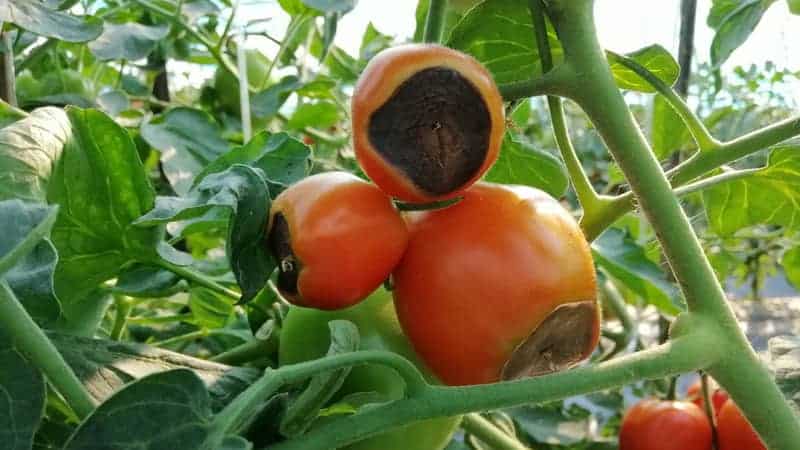
One of the most common problems is blossom end rot, which causes tomatoes to taste bitter and the fruit to rot.
It’s caused by a lack of magnesium in the soil, which prevents the plant from taking up calcium.
If you have blossom end rot, there are a few things you can do to save your tomatoes:
- Try picking the affected fruit early so they don’t get damaged or infected even further.
- Try adding magnesium to the soil around your plants to help with calcium intake.
- Don’t water your plants too much. Overwatering can cause the fruit to split and encourage the development of blossom end rot.
Leaf spot
Another common issue for tomato plants is leaf spot. This is typically caused by fungal or bacterial diseases, such as Septoria lycopersici.
However, it can also be caused by physical damage, such as pests or harsh weather conditions.
Leaf spots can vary in size and shape, but they are typically brown or black in colour.
They can also cause the leaves to yellow, wilt, and drop off the plant. In severe cases, leaf spot diseases can affect the fruit of the plant, causing it to rot.
Controlling leaf spot diseases begins with prevention. You can do this by:
- Keeping the plants well-watered and avoiding overhead irrigation. Tomato plants thrive best when you water them near the soil or roots.
- Spacing out your tomato plants properly, as this helps to increase air circulation and reduce humidity levels.
- Removing and destroying any affected leaves as soon as possible. This will help to prevent the disease from spreading to other parts of the plant.
If leaf spot diseases are a persistent problem, there are a number of fungicides you can use for treatment.
But it is always best to consult with a qualified professional before using any chemical products on your plants.
Aphids
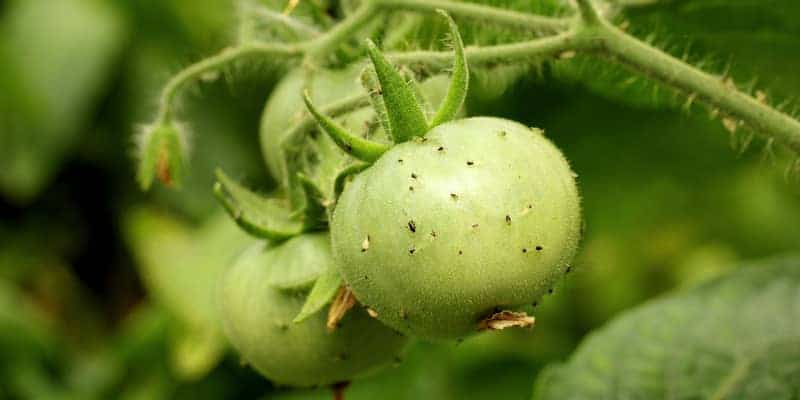
Aphids are one of the most common pests that can affect tomatoes.
These small, sap-sucking insects can cause a variety of problems for tomato plants, including leaf curling, stunted growth, and reduced yields.
Additionally, aphids can spread plant diseases, which can further damage the crop.
Fortunately, you can follow these simple steps to prevent aphids from harming your tomatoes:
- Start with healthy plants that have been properly fertilised and watered. Getting your starter plant from a reputable distributor means lower chances of bringing home diseased tomato plants.
- Remove any affected leaves or stems as soon as possible. Like basil and other herbs, you should immediately remove any leaves that are blemished or wilted to keep the plant healthy.
- Finally, it helps to attract natural predators like ladybugs, which will help to keep the aphid population in check. Planting nasturtiums with your tomatoes can draw ladybugs to your garden.
Leaves curling or yellow leaves
If you notice that your tomato leaves are curling or turning yellow, it could be a sign that something is wrong with your plant.
- One possibility is that the plant is not getting enough water. Curling leaves can be a sign of drought stress, so make sure to water your plant deeply and regularly during dry periods.
- Another possibility is that the plant is getting too much water. Tomato plants are vulnerable to fungal diseases if they are overwatered. Provide good drainage by placing rocks at the bottom of the pot and only water when the soil is dry.
- If you’re still not sure what’s causing the problem, look at the temperature and light conditions where your plant is growing. Extreme heat or cold can also cause leaf curl, so try to maintain a consistent temperature and provide adequate ventilation if necessary.
Determine the ripe tomato for you
Ultimately, it is up to the gardener to decide which type of tomato they would like to grow and how they plan on using them.
If you’re looking for a steady supply of fresh salads all season long, then indeterminate tomatoes are the way to go.
Or, if you want to can or make sauces with your fruit, determinate tomatoes will produce more volume and fewer seeds.
As with any living thing, your garden’s vitality depends on how much love and care you put into it.
Let our gardening professionals cherish your plants as you would — then sit back and enjoy homegrown goodness all season long.

